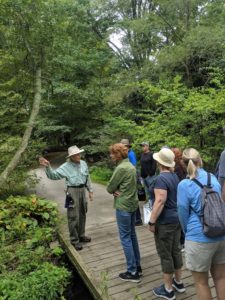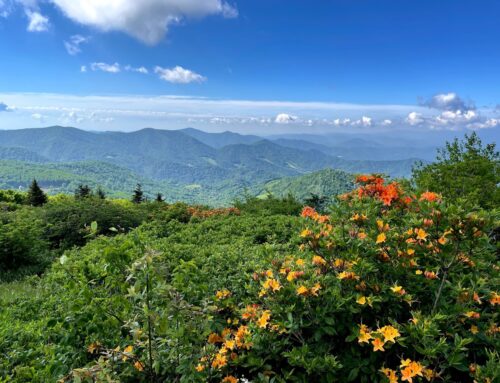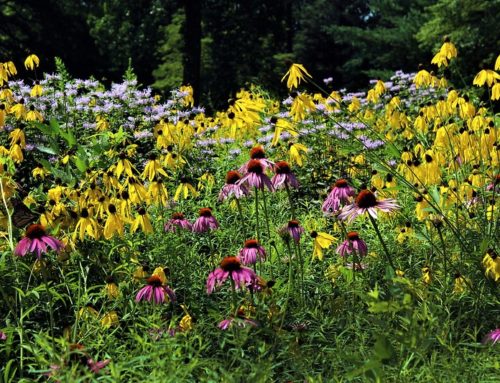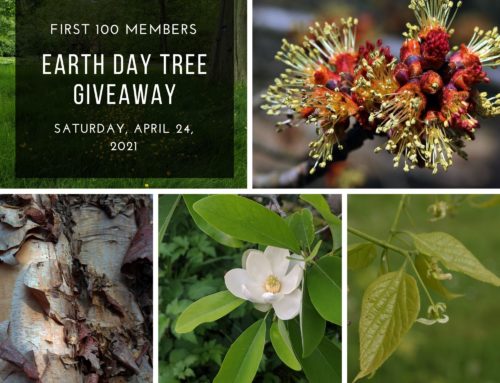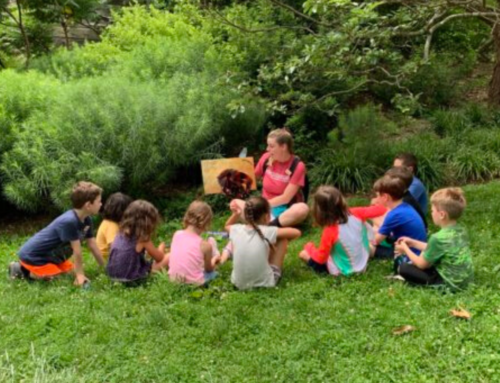People have been studying natural events since the dawn of time. Through these observations, we learned how to navigate the oceans, when to plant crops and when to pack up the camp and move on. In Victorian times, the term “Gentlemen Scientists” was given to those who studied, experimented and documented natural phenomenon. Some were formally trained, while others were novices. All were self funded (or had a patron). They contributed to much of our science of today. Did you know that Darwin, Tesla and Philadelphia’s favorite son, Benjamin Franklin were Gentlemen Scientists? Today, we call this work by regular people Citizen Science. At Citizen Science’s core is public participation, collaborating in scientific research to increase scientific knowledge. Through citizen science, people share and contribute to data monitoring and collection programs.
Tyler Arboretum has a long history with Citizen Science. Originally, Tyler Arboretum was a family farm passed down through many generations of the Minshall/Painter/Tyler family (1681 to 1944). It became an arboretum when two brothers named Jacob and Minshall Painter were fascinated by the natural world and spent their lives in the study of it. Their backyard was their laboratory. From 1850 to 1870, the Painter brothers began planting trees, collecting rocks, studying the skies and reading voraciously. To house their findings and books, the brothers built a library and constructed it with fireproof materials to ensure the items’ safety. They also built a greenhouse to coax early strawberries to fruit for the market. They even created a new method of categorizing life. Minshall Painter was one of the founders of the Delaware County Institute of Science, often giving lectures and donating many of his documented observations and specimens.
Scientific observation can happen anytime and anywhere. Today, observing nature is made easy by the use of technology and the ability to access scientific information. Volunteers in Citizen Science gain hands-on experience doing real science, and in many cases take that learning outside of the traditional classroom setting. Anyone can do this. We invite you to review the following Citizen Science projects and get involved in your own backyard or neighborhood while practicing social distancing. Post pictures of your participation at #Tylerarboretum #TylerCitizenScience #TylerEarthDay
Philadelphia City Nature Challenge
Between April 24 and April 27, 2020, Philadelphia and its adjacent counties will be competing against other cities in the world to see who can find the most species in their regions. If you are interested in contributing and helping Philly win, download the iNaturalist app and start documenting the wildlife in your area. You can also visit their project page to see the latest observations as they come in. Remember, all you need is to take a picture or video and a professional will do the identification on the app. Tyler is a partner with Philadelphia City Nature Challenge.
Project Budburst
Budburst brings together researchers, educators, gardeners, and citizen scientists on a shared journey to uncover the stories of plants and animals affected by human impacts on the environment. Take time to be outdoors, to enjoy nature, and to observe how plants in your yard and community change with the seasons. Budburst added a section just for families to get involved with downloadable activities.
Nature’s Notebook
Nature’s Notebook gathers information on plant and animal phenology across the U.S. to be used for decision-making on local, national and global scales to ensure the continued vitality of our environment.
Cornell Lab of Ornithology
The Cornell Lab of Ornithology hosts many citizen science projects for the family or group.
Celebrate Urban Birds: Get involved with birds and community activities in urban and suburban areas.
eBird: Track and share your sightings anywhere, any time.
NestWatch: Find and monitor bird nests.
Project FeederWatch: Watch and record birds at your feeders in winter.
Great Backyard Bird Count: On February 12-15, 2021, tally birds for at least 15 minutes.
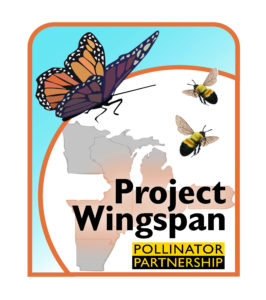
Project Wingspan
Project Wingspan seeks to increase monarch and rusty patched bumble bee habitat. Wingspan provides educational training for volunteers on plant identification and seed collection. Trained volunteers in collaboration with program partners will make targeted collections of local genotype native wildflower seed within designated collection zones.
Frog Watch
Volunteers are the foundation of the FrogWatch USA community – these trained individuals listen for frogs and toads during evenings from February through August and submit the observations to a national online database. Volunteers, researchers, and anyone with an interest in frogs and toads can explore the data through FrogWatch USA’s innovative online data entry, mapping, and analysis platform, developed by the National Geographic Society.
SciStarte
SciStarter is an online community dedicated to improving the citizen science experience for people who wants to participate in scientific observations. Over 3,000 projects and events are searchable by location, scientific topic, and age level, and by joining SciStarter, members can track their contributions and provide valuable feedback. SciStarter has a great list of podcasts.
Journey North, Tracking Migrations and Seasons
Journey North provides an easy entry point to citizen science, with simple protocols, strong online support, and immediate results. Reported sightings are mapped in real-time as waves of migrations move across the continent. People report sightings from the field, view maps, take pictures, and leave comments.


